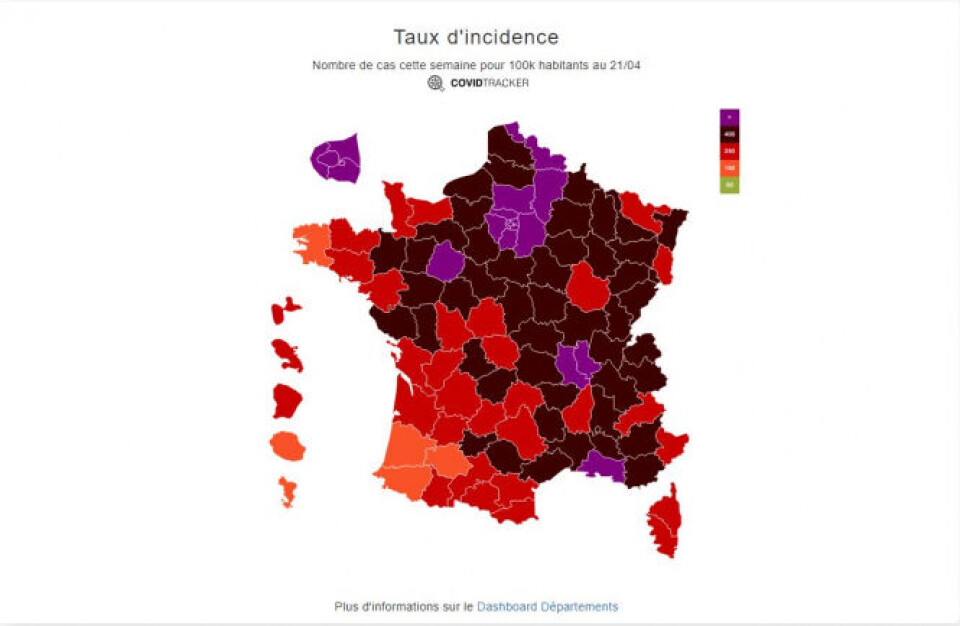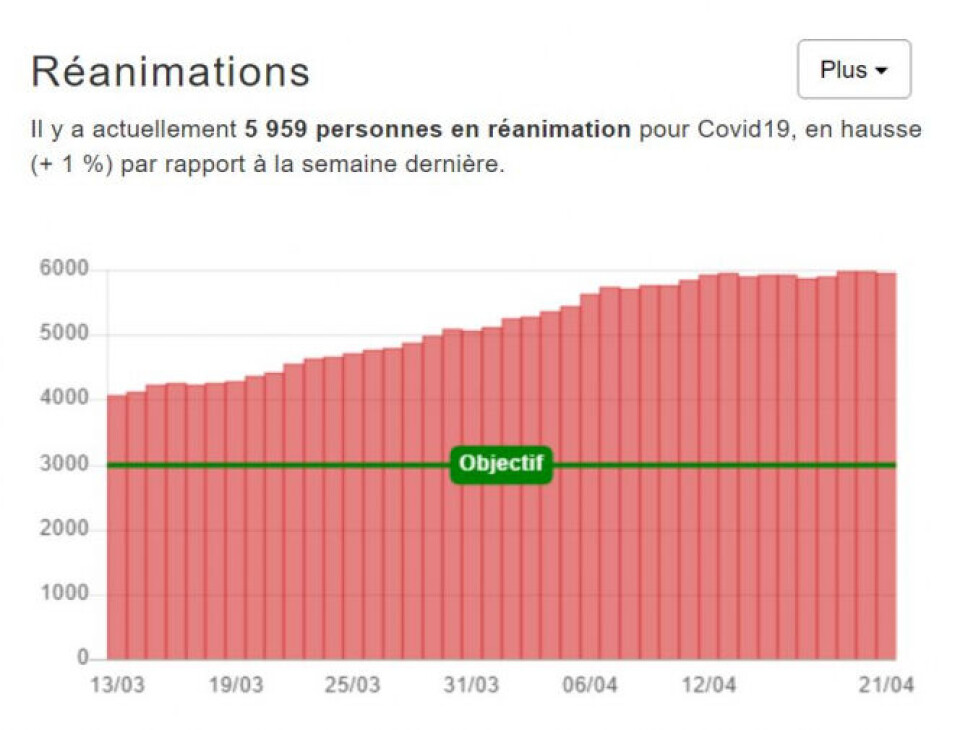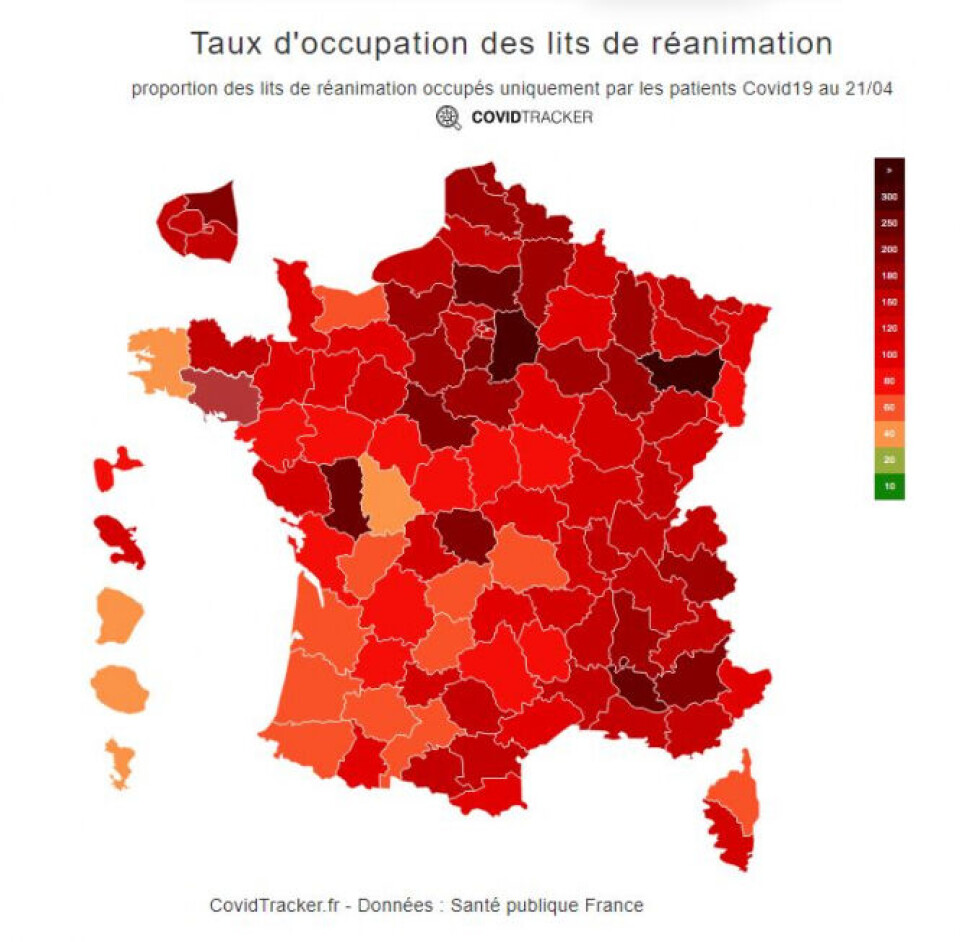-
New civic tests for foreigners in France launch amid criticism
Applicants for some types of residency cards must now take 45-minute test
-
Workers in France can take 17-day break using only eight days of leave in 2026
Favourable calendar for public holidays makes extended May break possible, with five guaranteed long weekends throughout year
-
David Hockney among France’s New Year honours list
Former Normandy resident awarded second grade of honour
Where in France are restaurants expected to open first?
Shops, restaurants, cafes and culture venues will be reopened progressively from mid-May. We look at where could be first if the government decides to stagger dates by areas

The French government is looking into the option of reopening the country area-by-area, which would mean shops, cultural venues, cafés and more could be back in business earlier in places with fewer Covid-19 cases.
Government spokesman Gabriel Attal confirmed yesterday (April 21) that places will be reopened “progressively” between mid-May and the beginning of summer. The 10km travel limitation and movement between departments will be dropped on May 3 for the entire country.
Meanwhile, 12 retail federations and 150 managers of shopping chains have called on the government to open shops on May 10 latest, for the entire country.
Opening on May 10 would mean they could be in business before the Ascension Day holiday on May 13 and Mother's Day on May 30.
“Progressively” could refer to opening places based on areas in France with low Covid-19 rates, to sectors of business or other measures such as limits on the number of people entering places or varied opening hours.
French minister favours easing Covid rules in lower risk areas first
We look at the areas of France that are the least affected by the pandemic and where openings could be rolled out first if this approach is taken.
Covid-19 by area
The Covid-19 situation is not equal over France, with infection rates far higher in some places than in others.
The spread of Covid-19 is beginning to slow in France in departments where stricter measures - meaning restrictions on movement and the closure of shops - were introduced on March 20 and 27, Santé Publique France stated in its weekly report on the pandemic, published April 16.
The departments are:
-
The eight departments of Ile-de-France : Paris (75), Seine-et-Marne (77), Yvelines (78), Essonne (91), Hauts-de-Seine (92), Seine-Saint-Denis (93), Val-de-Marne (94), Val-d'Oise (95)
-
The five departments of Hauts-de-France : Aisne (02), Nord (59), Oise (60), Pas-de-Calais (62), Somme (80)
-
Eure (27)
-
Seine-Maritime (76)
-
Alpes-Maritimes (06)
-
Aube (10)
-
Nièvre (58)
-
Rhône (69)
The map below shows the incidence rate of Covid-19 in each department - this is the number of recorded positive cases of the virus per 100,000 people.
50 cases per 100,000 is considered in France to be the maximum alert level. All departments in metropolitan France are currently far over this rate.
The national average incidence rate is 337.5.

The graph shows that there are clear disparities in the level of Covid-19 cases in France.
The three departments in the southwest coloured orange are Landes, Gers and Pyrénées-Atlantique. They have an incidence rate of 123, 109 and 106 respectively.
Finistère, the department coloured orange in Brittany in the northwest, has an incidence rate of 90, the lowest in the country.
Rémy Guillou, the mayor of Plouisy, a commune in the Côtes-d'Armor department of Brittany, has called for restrictions to be loosened in areas with fewer Covid-19 cases.
"In areas where the disease is less prominent, where the virus is receding, we can allow people to live a less constrained life," he told Franceinfo.
Côtes-d'Armor has an incidence rate of 219.
"We need to give back a little freedom, a little social life, because we encounter a lot of psychological problems in the population, especially for isolated people,” Mr Guillou said.
In Tarascon-sur-Ariège, a commune in Occitanie in the southwest, masks are no longer obligatory outside, except near markets or schools. The town of 3,000 inhabitants has an incident rate of 100.
The mayor of the town called for people to remain prudent, despite this relaxation.
In terms of regions, the least affected by Covid-19 in France are Brittany and Nouvelle-Aquitaine, with incident rates of 202 and 201 respectively.
The worst are Île-de-France, 530 and Hauts-de-France, 403.
You can view the incidence rate broken down into communities of communes on the website Covidtracker.fr, by following this link.
This gives a more localised view of the pandemic.
Intensive Care Units
The number of Covid-19 cases is not the only important factor to consider when assessing the pandemic.
France has also struggled recently with a high number of patients in intensive care units (ICUs) for Covid-related reasons.
There are just under 6,000 people in ICU due to Covid-19 on a national level, as shown in the graph below. This is far higher than the government’s objective of keeping the rate between 2,500 and 3,000.

On a more local level, the department of Vienne in Nouvelle-Aquitaine is fairing the best. There, 28% of the ICU beds that were available before the pandemic began are occupied by Covid-19 patients.
Finistère is the second best on this, with 36% of ICU beds that were available before the pandemic began being occupied by Covid-19 patients.
Since the pandemic began, more hospital beds have been converted to have the same equipment as ICU beds, meaning the figures of 28% and 36% could be higher than in reality. You can read more about that in our article here.
At the other end of the spectrum, in the department of Vosges in the Grand Est, 338% of ICU beds available before the pandemic are occupied.
The graph below shows the proportion of beds in ICUs occupied by Covid-19 patients in each department in France.

Read more:
























